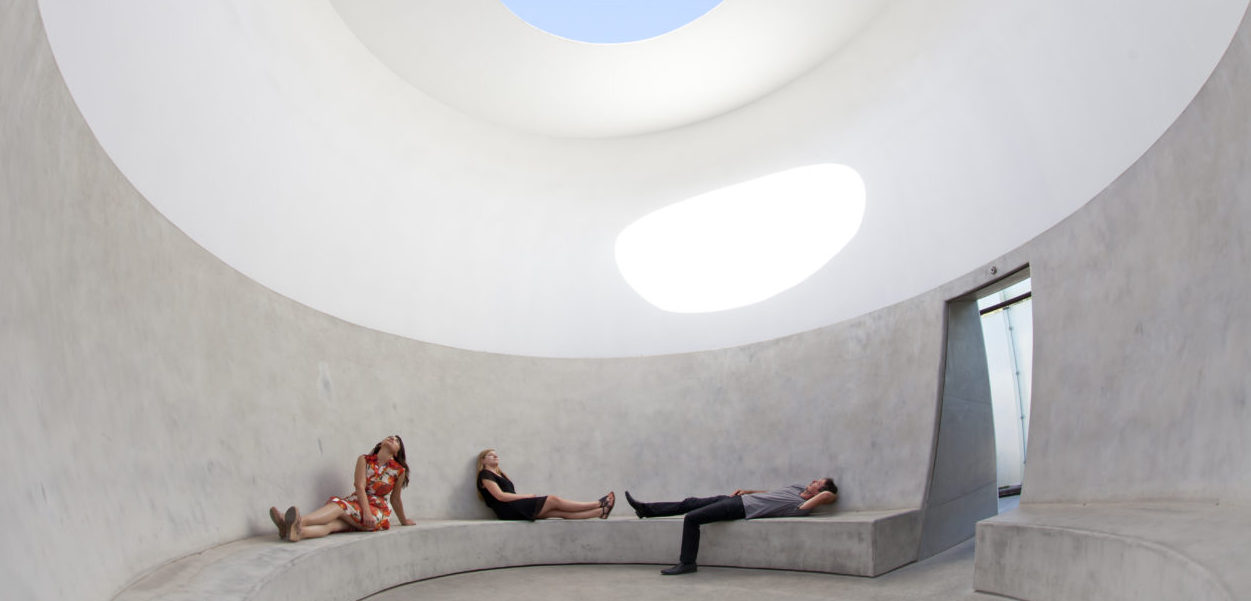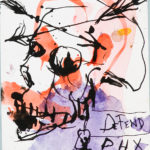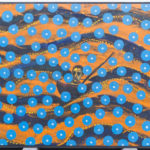Writer Kenneth LaFave
[dropcap]I[/dropcap]t takes an artist days, weeks, months, or perhaps even years to create a work of art.What is the average time a museum-goer spends in front of that work?
“Twenty seconds,” says Sara Cochran, director and chief curator for the Scottsdale Museum of Contemporary Art (SMoCA).
“Ours is a topsy-turvy old world. We lead increasingly busy lives and pride ourselves on multitasking even when doctors and scientists tell us to slow down and live in the moment in order to increase our health, happiness and productivity,” Cochran observes.
All that busyness leads to the 20-second syndrome, something SMoCA is contending with an innovation called “Slow Art.” Initiated as a one-night event in January, Slow Art featured three docents taking 20 patrons on a tour of the museum’s exhibitions, with lengthy stops at every individual piece of art. The event was a success, so Cochran has scheduled a follow-up on April 21 at 6:30 p.m. For every seven patrons who sign up for Slow Art, Cochran will assign a docent, so the docent-to-viewer ratio will remain intimate. Participation is limited but you can sign up to climb onboard the slow journey through SMoCA’s amazing exhibitions at smoca.org/events.
“Slow Art is all about relearning how to take the time to look closely at, understand more deeply and fall back in love with art,” Cochran says. “As the artist Robert Irwin once said of his exquisite work that encourages concentration and focus, he wanted to give the viewer the opportunity to ‘perceive themselves perceiving.’ The individual viewer is front and center, looking and thinking at their own pace, a luxury of experience and time.”
Art is not a one-way communication from the work to the viewer, Cochran believes, but an interaction. And that takes time. The assistance of a knowledgeable docent helps, too.
Cochran acknowledges that the traditional idea considers museums as places for quiet contemplation. That’s how things were, she says, until a certain Egyptian pharaoh made his way west.
“In the 1970s we had the King Tut exhibition which was the dawn of the blockbuster. The idea was you stood in a queue along the wall watching as you moved in a line,” says Cochran. “This was true of all the blockbusters that followed.”
Did we, like laboratory rats, re-learn our museum behavior and adjust for speed?
“Maybe we trained ourselves not to take the time,” she admits.
To look at art works lickety-split is a “disenfranchisement,” Cochran says. To view them slowly is to re-engage the senses and the mind. Dialogue between docents and patrons about the works viewed is a part of Slow Art.
“You have to meet the artist halfway,” she says. “When you have, if you don’t like the artwork, then that’s okay. That’s taste and we all have taste. The problem comes when you don’t know what the artist is doing.”
Slowing down and looking is the path to understanding.
“The more you give to the artwork,” says Cochran, “the more it will give back.”
Scottsdale Museum of Contemporary Art
7374 E. Second St., Scottsdale
April 21
Tour begins: 6:30 p.m.
480-874-4666











Comments by Admin